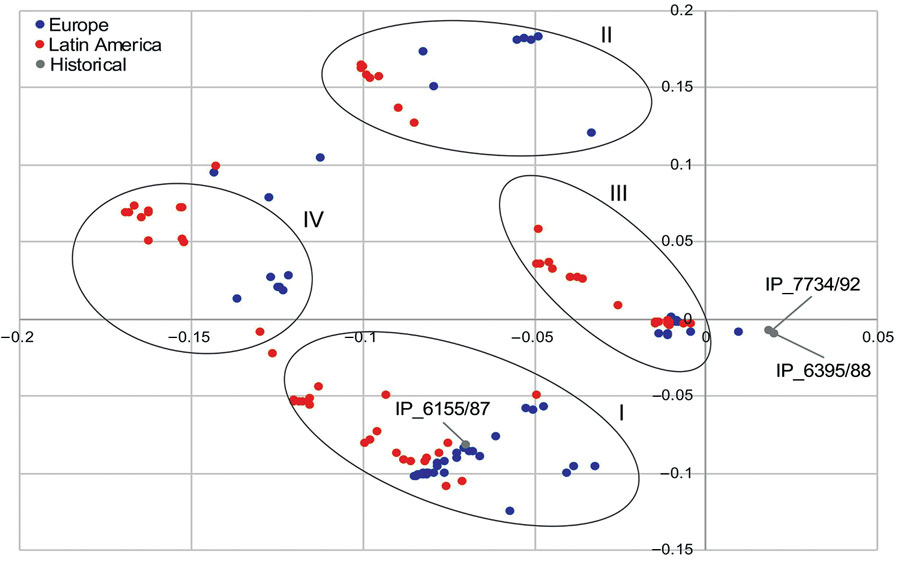Volume 26, Number 6—June 2020
Research
Antimicrobial Resistance in Salmonella enterica Serovar Paratyphi B Variant Java in Poultry from Europe and Latin America
Figure 4

Figure 4. Principal component analysis plot comparing plasmid composition (all plasmid contigs) of strains of Salmonella enterica serovar Paratyphi B variant Java sequence type 28. Oval rings indicate clusters I–IV. All clusters grouped strains from Europe and Latin America and were associated with IncI1 plasmids (cluster I), IncHI2 (cluster II), COLRNAI (cluster III), and combinations of IncI1 and IncHI2 plasmids (cluster IV).
1Current affiliate: Quadram Institute Bioscience, Norwich, UK.
2These authors contributed equally to this article.
Page created: May 18, 2020
Page updated: May 18, 2020
Page reviewed: May 18, 2020
The conclusions, findings, and opinions expressed by authors contributing to this journal do not necessarily reflect the official position of the U.S. Department of Health and Human Services, the Public Health Service, the Centers for Disease Control and Prevention, or the authors' affiliated institutions. Use of trade names is for identification only and does not imply endorsement by any of the groups named above.